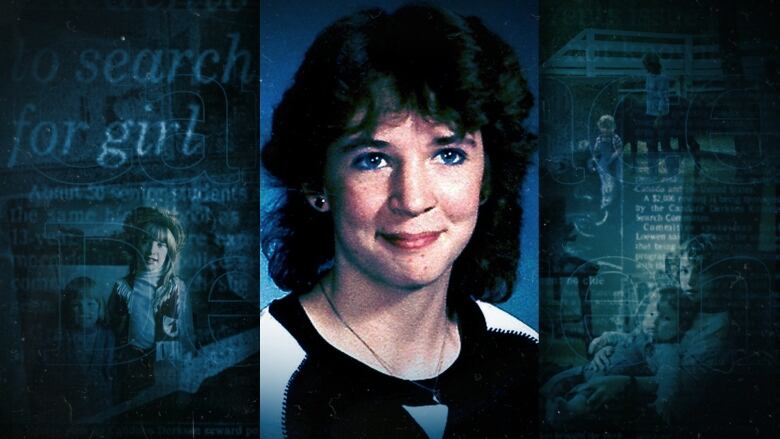Inaccuracy in DNA report called out at Candace Derksen murder retrial

The lab that conducted DNA tests on crime scene evidence and potential suspects in the Candace Derksen case never disclosed an inaccuracy in one of their reports, court heard Thursday.
On day 9 of the retrial into the Winnipeg teen's murder, Curtis Hildebrandt, a former senior scientist and co-founder of Molecular World, was called to testify.
Candacewent missing on Nov. 30, 1984. Her body was found tied up in a storage shed not far from her family's home on Jan. 17, 1985. DNA evidence linkedMark Grantto the teen's murder in 2007. He is being tried in her death for the second time, after his first conviction was overturned in 2013.
Cold case investigatorssought out the Molecular World lab in 2006 to re-run DNA tests on hairs found at the 1984 crime scene as well as samples from new persons of interest, including Grant.
The Thunder Bay, Ont. lab offered two types of DNA tests unavailable at the RCMPforensic lab:mitochondrial and Y-STR DNA testing.
Hildebrandt gave the court detailed explanations about how the seven hairs were cut from slides and the process involved to extract DNA, purify it and copy it to generate DNA profiles.
He told court he tested four DNA samples submitted by police, including one fromGrant.
"Once we generate a profile we would run it through the FBI database," Hildebrandt explained. "The goal of that was to see how many 'profiles'matched. Unlike other DNA tests, mitochondrial tests, however, cannot be used to identify an specific individual.
The test identifies all individuals who share the same maternal lineage.
The test can however be used to "completely exclude" individuals when no match is present.
Court later heard Hildebrandt's mitochondrial comparison found all three persons of interest were excluded from any crime scene hair matches, but Grant's "could not be excluded,"he said.
When Grant's profile was run in the database, it appeared one out of 11 times.
"That's common," Hildebrandt told court. "There would probably be a few people, given the number of people in this room, with that same profile."
DNA 'used up' during testing
Hildebrandt was also asked by police to re-swab and test the twine Candace was found tied up with and tubes containing DNA previously extracted from the twine in 2001.
There was limited DNA left in the tubes because every time a test is run, some of the DNA is used up and over time the extracts degrade.
Hildebrandtran tests on the twine and the extracts.
He testified the re-swab of the twine yielded "no reliable data" because there was simply not enough DNA to generate a profile.
"It could be because the DNA was degraded," he said.
The extracts also did not contain enough viable DNA within the sample, Hildebrandt said.
"There were two male contributors," he said, indicating it generated what's called a "mixed profile."
Hildebrandt testified he "used up the entire contents" of the DNA extracts during his last tests and all protocols were followed. Hildebrandt added the Thunder Bay, Ont. lab was fully accredited to conduct DNA testing by the Standards Council of Canada (SCC) and subject to audits every two years.
Cross-examination highlights error
Grant's defence lawyer Saul Simmonds began his cross-examination calling into question the credibility of Hildebrandt's work.
"They don't evaluate if you're doing good work," Simmonds said to Hildebrandt, referring to the SCC. "They don't look if you're dealing with degraded DNA or if you're proficient in dealing with degraded DNA."
Hildebrandt agreed.
Simmonds then raised issues with an inaccuracy in Hildebrandt's 2007 report of lab results provided to the police and the courts.
"As a scientist you're supposed to be precise," Simmonds told Hildebrandt.
He then pointed to a part of Hildebrandt's DNA analysisthat indicated all base pairs of DNA strands were tested, but the reality is that 12 were missed, Simmonds said.
"Until you entered this courtroom you never told anyone about a problem withrespect to the 12 base pairs," Simmonds said.
Hildebrandt denied knowing there was a problem. However, Simmonds suggested Hildebrandt knew this part of a test of the test was missed, and had discussed it with his superior Dr. Chahalafter the 2011 trial.
Simmonds saidnot only was the report not corrected, it also wasn't re-tested and the police or the courts were not made aware of the oversight.
Hildebrandt acknowledged this and agreed a correction "should have been issued,"but he said it would not have changed the conclusion of any results.
"Statistical probability might change but it wouldn't change the overall outcome," he said.
Simmonds disagreed.
"You still don't make a report of that ... in order to be precise for for a trial," he said.
The defence's cross-examination continues on Friday.
The judge-only retrial began on Jan. 16. Justice Karen Simonsen is presiding over the trial.Brent Davidson and Michael Himmelman are acting for the Crown and Saul Simmonds is representing Grant.












_(720p).jpg)


 OFFICIAL HD MUSIC VIDEO.jpg)
.jpg)



























































































